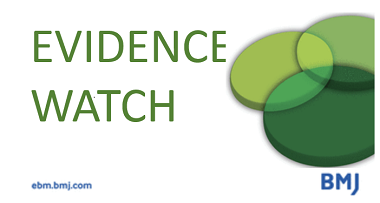We’ve been here before with devices, the studies are small, biased, there is lots of uncertainty about who, if anyone, benefits from this treatment and the adverse events including admissions are higher.
Carl Heneghan
 Bronchial Thermoplasty is all over the news today: The BBC reports that the New asthma treatment is set for wider NHS distribution:
Bronchial Thermoplasty is all over the news today: The BBC reports that the New asthma treatment is set for wider NHS distribution:
“The procedure, bronchial thermoplasty, “melts” away excess muscle tissue in the lungs using radio frequency, making breathing easier. Previously there were strict criteria about who was eligible to receive it. But the National Institute for Health and Care Excellence (Nice) says it can be offered more routinely, after it was proved to be safe and effective.” Source BBC
The NICE consultation document is here. It sets out that the current evidence on the safety and efficacy of bronchial thermoplasty for severe asthma is adequate to support the use of this procedure provided that standard arrangements are in place for clinical governance, consent and audit.
NICE’s evidence summary is where this approval gets concerning.
It is based on an AHRQ’s systematic review of the Effectiveness and Safety of Bronchial Thermoplasty in Management of Asthma. The evidence is limited, the adverse events are concerning and it turns out the treatment is no better than a sham. The systematic review found fifteen studies, but only three of these were randomised trials including 432 participants.
The Asthma Quality of Life Questionnaire (AQLQ) showed a small difference in patients who had bronchial thermoplasty (mean difference 0.28, 95% confidence interval 0.07 to 0.5). A change in score of 0.5 on the 7-point scale is the smallest change that can be considered clinically important and would justify a change in the patient’s treatment. There was also no difference in hospital admissions and reduction in steroids across the three trials.
Admission to hospital during the treatment period, however, was higher in thermoplasty patients (RR 3.5, 95% CI 1.26 to 9.68), along with respiratory adverse events: thermoplasty (407 events) compared with SMC or sham (106 events).
In the one trial that used a sham procedure asthma control, hospitalizations for respiratory symptoms, use of rescue medications, pulmonary physiology measures, or AQLQ scores showed no improvement. So while the quality of life measures show a small statistic difference in two nonblinded studies, these measures did not improve in the sham-controlled study.
We’ve been here before with devices, the studies are small and biased; there is lots of uncertainty about who, if anyone, benefits from this treatment and the adverse events including admissions are higher in the treated group. Approval of devices based on a very low bar of evidence often adds costs, leads to patients harms and waste scarce healthcare resources – be warned.
References
Effectiveness and Safety of Bronchial Thermoplasty in Management of Asthma [Internet]. D’Anci KE, et al. Rockville (MD): Agency for Healthcare Research and Quality (US); 2017 Dec.
BMJ Evidence-Based Medicine – original evidence-based research, insights and opinion
Read more in the Welcome to BMJ Evidence-Based Medicine Editorial.

Competing interests
Carl has received expenses and fees for his media work including BBC Inside Health. He holds grant funding from the NIHR, the NIHR School of Primary Care Research, The NIHR Oxford BRC and the WHO. He has also received income from the publication of a series of toolkit books. CEBM jointly runs the EvidenceLive Conference with the BMJ and the Overdiagnosis Conference with some international partners which are based on a non-profit model.